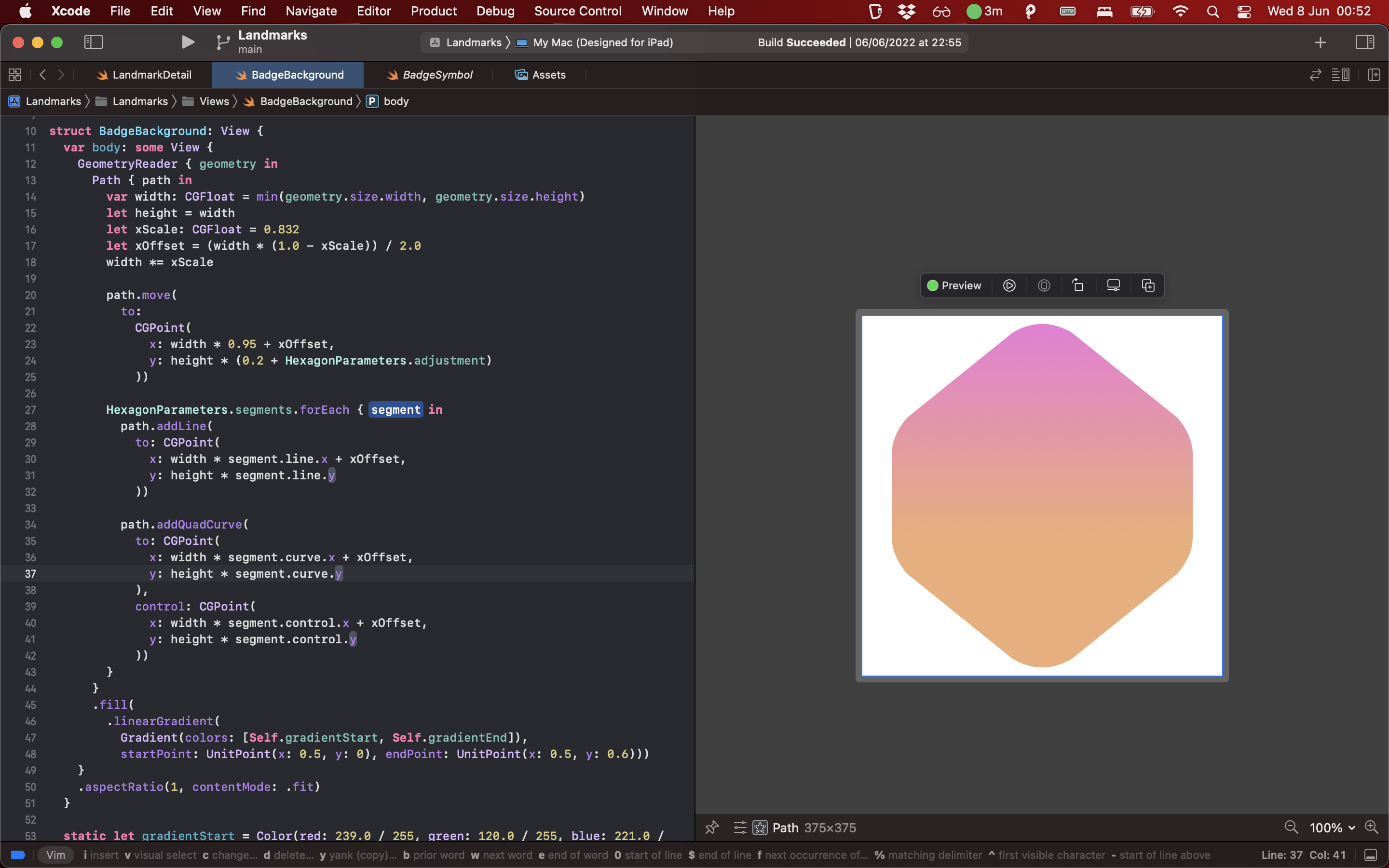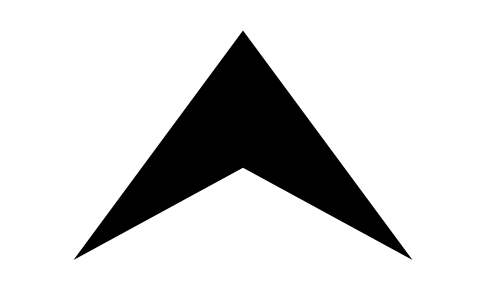Learning iOS and Swift. Day 20: Apple's tutorial on Defense Against the Dark Arts
Karol Moroz on
Today I followed the chapter Drawing Paths and Shapes from Apple’s SwiftUI tutorial. At first, the tutorial taught me how to draw a rounded hexagon using hard-coded path segments of Bézier curves. If I understood it correctly, a Bézier curve consists of three (or more?) points which define the start and end of a line, and its curvature.
This reminds me of what Lea Verou once said in her almanach of CSS magic called CSS Secrets.
It was something along the lines of “SVG syntax for path is very complicated, because when it was being designed, no one expected that people would be writing SVG by hand.”
Although Web technologies constitute my comfort zone when it comes to building pretty things on a computer’s screen, I do anticipate that native bindings from UIKit and similar libraries may be many times more performant and powerful than hacks built on top of an XML-based vector graphics format and a programming language designed in 10 days for the absurdly complex ecosystem called “the Web browser.”
Luckily, Apple’s CoreGraphics can definitely be written by hand, even if at this point I couldn’t come up with the same ingenious code that paints a gradient-filled, rounded hexagon on the screen:

Then, there is a snippet I understand much better, which renders a complex polygon using an array of CGPoints:
import SwiftUI
struct BadgeSymbol: View {
var body: some View {
GeometryReader { geometry in
Path { path in
let width = min(geometry.size.width, geometry.size.height)
let height = width * 0.75
let spacing = width * 0.03
let middle = width * 0.5
let topWidth = width * 0.226
let topHeight = height * 0.488
path.addLines([
CGPoint(x: middle, y: spacing),
CGPoint(x: middle - topWidth, y: topHeight - spacing),
CGPoint(x: middle, y: topHeight / 2 + spacing),
CGPoint(x: middle + topWidth, y: topHeight - spacing),
CGPoint(x: middle, y: spacing),
])
}
}
}
}The resulting shape:

The tutorial then proceeds with overlaying complex polygons and other shapes on top of the gradient-filled rounded hexagon. This is a matter I shall explore tomorrow.